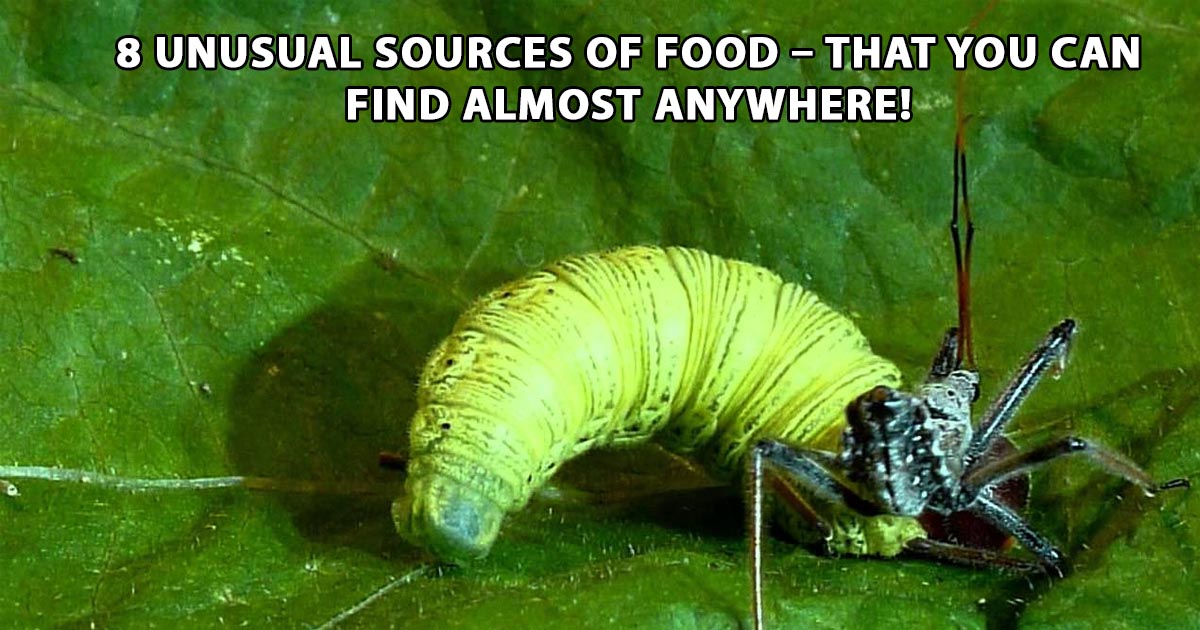
If you find yourself lost and alone in the wilderness – seemingly without a way out – it’s good to be aware of the food sources around you!
Here is a list of 10 unusual sources of food that you can find almost anywhere (note: this is not a list of the most delicious foods. BUT they should help keep you alive until help finds you):
#1 Cattails
If you’re near a swamp or pond, chances are there are cattails growing nearby. Cattails can provide nutrients as well as material to help build shelter. They are extremely versatile and often praised for their wide-range of survival uses. The best part is that, regardless of season, there are always edible parts of the cattail plant.
#2 Oak Nuts
Believe it or not, all nuts produced by oak trees (aka acorns) can be eaten. Every nut contains tannic acid that must be removed first, which is usually done by boiling the nuts for a period of time. Acorns offer an excellent source of nutrients such as protein, fats, and vital calories! White oaks will have the best flavor due to low levels of tannic acid.
It cannot be stress enough: always be sure to correctly identify a plant first before eating it. Eating the wrong plant can have deadly side-effects!
#3 Grasses
All grasses that you see are edible. Popular ways to eat grass include chewing the leaves to access the juices inside and/or roasting the white base and eaten like a potato. Bonus: grass is a great source of natural fiber.
#4 Conifers
The thin cambium layer of bark found inside conifer trees offer tons of sugar and starches. While most evergreens and cone-bearing trees will offer edible cambium layers, AVOID conifers that produce red berries as those trees will be poisonous.
#5 Fish
Any fish that you find in North America will be edible. As savage as it looks to rip the flesh of a freshly caught fish with your bare teeth, it’s important to always cook your meat before eating to avoid diseases and parasites. While not the easiest, you can try your hand at catching fish with a sharpened stick or even use a shirt as a net for smaller fish types.
#6 Birds
Not so great at fishing? You might have better luck looking to the sky…
All bird types are also edible. They can be caught using popular trapping techniques – like snares – while on the ground, or by using sticks and throwing rocks while in the air. Bird eggs are also a delicious source of calories.
#7 Small Mammals
If you are an experienced trapper (a skill every survivalist should have in their arsenal), small mammals can be added to your menu.
These include squirrels, rabbits, opossums, beavers, armadillos, etc. Not only are they abundant with protein, fat, and carbohydrates, they produce a lot of it! On top of that, the hides, bones, and organs of small mammals can be used to produce clothing, tools, shelter, bait, and all types of useful items to help you in survival situations.
#8 Insects
You’re probably thinking to yourself that you’d have to be in very dire straights before resorting to eating insects. While this is probably the case for most people, it should be noted that many insects are an excellent source of protein and can be easier caught than fish, birds, AND small mammals. And for that alone, they shouldn’t be dismissed as a source of food! Ants, grubs, and grasshoppers are all edible.
















Connect With Us!